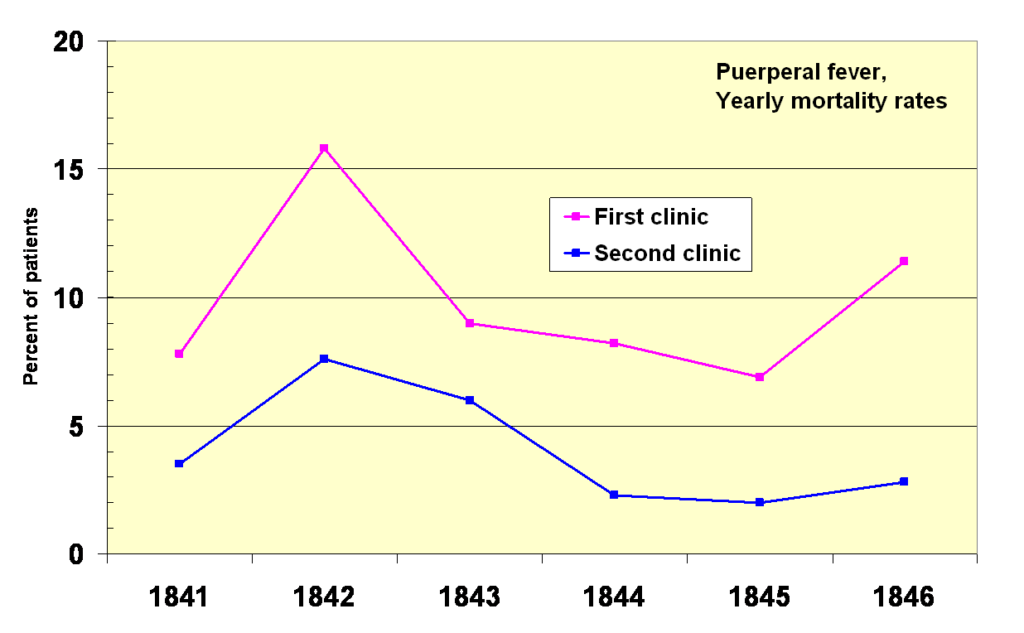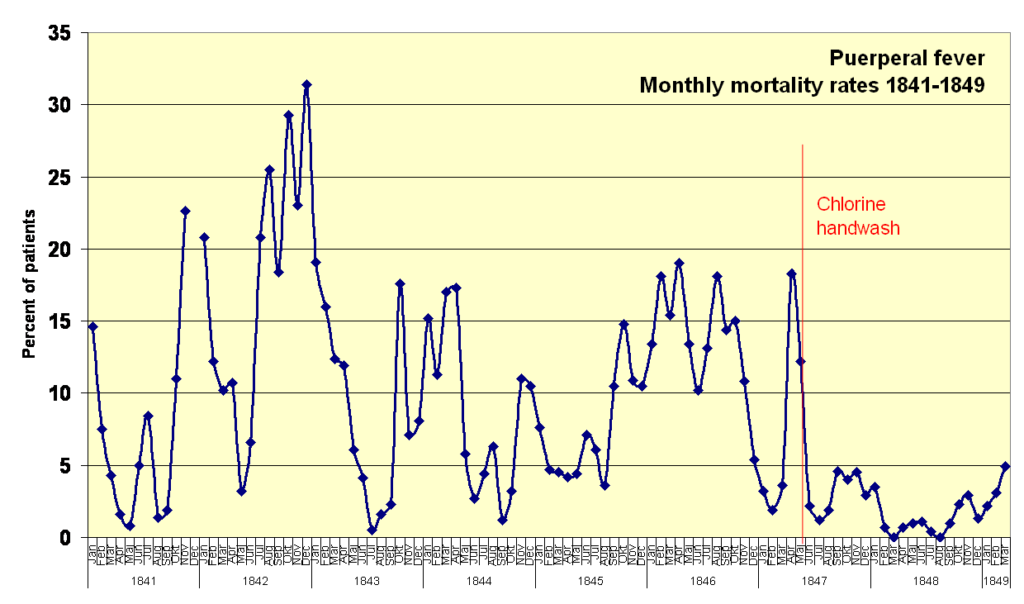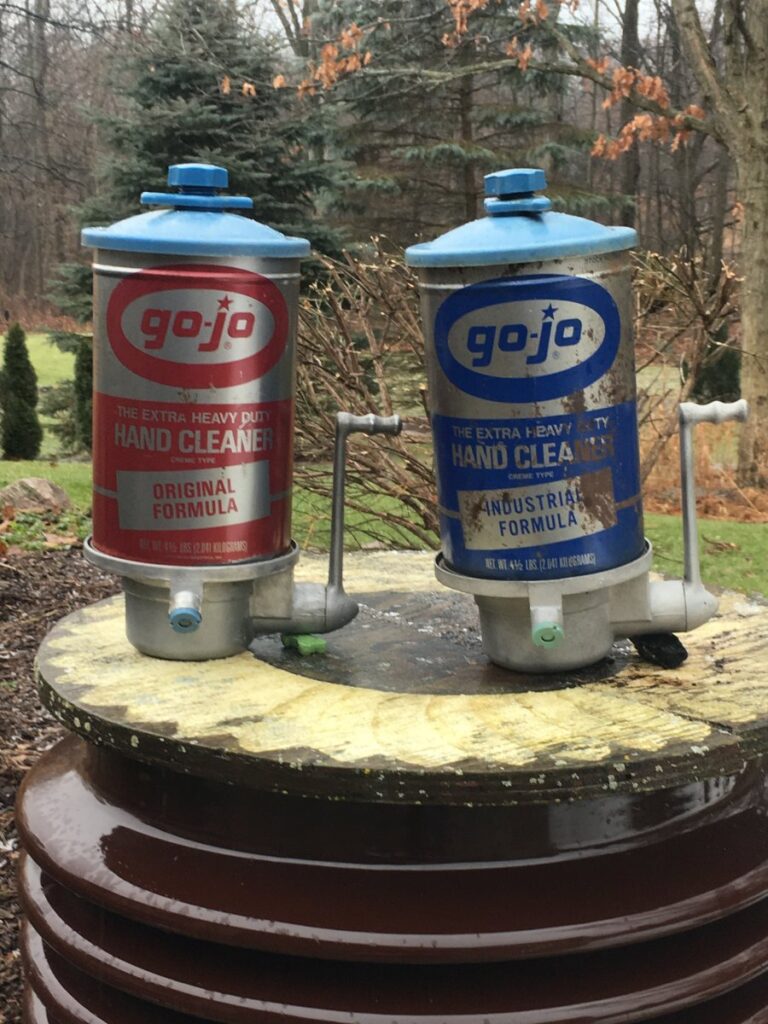Classic Cars, Movies, Music, and Other Stuff ...
Hand Sanitizers have been with us for quite a while although it’s the Coronavirus pandemic that has heightened their importance of late. Although we all have some rudimentary history of Hand Sanitizers, I wondered where the origins of the hand sanitizer lie and its evolution.

So, here’s a quick look at how the idea of sanitizing your hands started and ended up in those much sought after bottles in the present-day situation. I’m keeping this as “lite” as possible by not dwelling on the use of soaps and hygiene products that existed in ancient times back in Asia and Europe. While the importance of personal hygiene and subsequent use of soaps and the like was already recognized in ancient civilizations, it is in 19th Century Europe where my story starts. It is from events and subsequent research in Europe that this evolution of Sterilization and Hand Sanitization affects us the most in the present-day modern world. There are other popularly known cleaning and sterilization products available. But we will concentrate on the recommendations made by the WHO, CDC, PHAC, etc. in response to the current COVID-19 pandemic.
“… while the importance of personal hygiene and subsequent use of soaps and the like was already recognized in ancient civilizations, it is in 19th Century Europe where my story starts…”

It was back in 1847 that the importance of sanitizing your hands was recognized by Dr. Ignaz Semmelweis, an ethnic German born in Budapest, Hungary. He was working in Vienna General Hospital’s First Obstetrical Clinic. While there, he was disturbed at the high mortality rate due to Puerperal (or “Childbed”) Fever. Here, he worked in two separate clinics and noted a higher mortality rate in the first one compared to the second. On postulating various reasons for this difference, he was left with only one final, as the most probable reason for this discrepancy. The second one with the lower mortality rate was used only for training midwives while the first clinic included doctors who worked in a more germ prone environment with cadavers and often conducted autopsies. As such, the second one only involved childbirths. This led him to conclude that the environment in the first clinic resulted in more contaminated hands and the subsequently higher infection rate than in the second one. He immediately initiated the requirement that all doctors and professionals wash their hands in chlorinated lime solution before approaching any patient to ensure they were germ free. The mortality rate in the first clinic declined considerably after this. This, he felt, was confirmation of his hand sanitization theory. This data is reflected in the following graphs:


But things did not go well for Dr Semmelweis despite this success. The medical community was offended by this theory and refused to accept it as they were convinced there were other factors involved. He carried on his research regardless. By 1848 he extended the use of the same sanitization procedure to also cover the instruments that were being used on patients. This resulted in more successes as mortality rates declined further still. By now his research publications were finding respect Europe. Medical journals everywhere took notice including ‘The Lancet’ in England. However, despite this, he still faced stiff opposition from others. Many of them of them suggested he had said nothing new as Oliver Wendell Holmes had already written that the high mortality rates were the result of infections passing between patients. Also, at this stage much of his work was being published by his students and was treated as second hand information. As he had personally not been publishing much during this time, his credibility was further eroded. However, Semmelweis, continued with his successes in reducing mortality rates in Budapest through the tumultuous mid-1800s.
Semmelweis’ findings were better received in the United Kingdom albeit, again, as a supporter of their theories. He never really found the respect he deserved and, towards the 1860s, started displaying signs of absent mindedness and dementia. He continued with his obsession related to cleanliness and mortality rates and was finally committed from where he was never to fully recover. He died on August 13, 1865 due to injuries suffered in the asylum. His death was officially attributed to ‘blood poisoning’. Ironically, it was after his death, that further research and adoption of his ideas that hand sanitization and related practices were officially adopted. And so was born the origins of the hand sanitizer we use today.
While the mixture of Chlorine and Lime promoted by Dr Ignaz Semmelweis was the most common form of sanitizer used in hospitals and clinics, how it evolved into an alcohol-based gel over the years remains a mystery. There is no one definite source of where the first hand sanitizer as we know it today was devised or used. There have been articles that give credit to an American nurse in the mid-1960s.
But none of this information has been verifiable. As per this information, the nurse wanted to devise a quick and easy to use fluid for the purpose of hand sanitization. But using straight alcohol, which everyone knew was a good sterilizer, was problematic at was too thin and difficult to use. As per popular belief, this nurse (whose gender has not been confirmed) devised a way of using gel as a thickening agent to create what we know as the current hand sanitizer. Due to its thickness, this new gel with 60%-65% Alcohol content appeared to be the perfect solution for the nurse. Apparently, he/she has also been credited as having tried to patent it. But, again, there is no verifiable proof this nurse even existed despite references to him/her in many professional publications.

What is known is that in 1946, an enterprising couple of Goldie and Jerry Lippman founded GOJO. They had noticed how, during WWII, factory workers in rubber factories had a hard time in cleaning their hands. They dipped their hands in kerosene and benzene to remove the stubborn black soot on their hands. Needless to say, these chemicals damaged their hands on the long run. Jerry approached Professor Clarence Cook, a chemist at chemistry department of Kent State University for help in devising a gentler substitute for the factory workers. Their work paid off as they devised the first one-step, rinse-off GOJO Hand Cleaner. They originally sold this in reused pickle jars out of their family car. Then they went further and devised a portion-control dispenser that would release only a set amount of hand cleaner at a time.

This was necessary as factories were having a hard time keeping the new hand cleaner in stock because the workers kept taking quantities with them to use at home. This was the first soap dispenser liquid soap dispenser of its kind and was patented to GOJO in 1952.This dispenser was such a success; it was used all across the United States. Wall mounted soap dispensers throughout the world owe their origin to GOJO.

And so, it went with hand soap and soap dispensers until 1988, when GOJO invented the current Hand Sanitizer. This new Hand Sanitizer enabled employees and patrons anywhere to clean and sanitize their hands of germs without access to a sink.

By 1997, this product was also available in the consumer market and general public. These developments put GOJO and PURELL as the undisputed leaders in hand sanitizers and personal hygiene. PURELL has continued developing new customized hygiene products and dispensing solutions. Many other companies have entered this fray, but GOJO can definitely be attributed to being the pioneer and leader in this field. Thanks to the brilliant minds of Jerry and Goldie Lippman, we have finally achieved in our hands, what Dr Ignaz Semmelweis initiated almost 170 years ago.

The current worldwide crisis has highlighted the importance of frequent hand washing/sanitization like never before. And among the items most sought after, among other things, are Hand Sanitizers which are the go-to items for anyone who is unable to do the 20 Second wash with regular soap. Something almost insignificant and sometimes laughed away as a germophobes tool has taken on such a major importance in our daily lives. As I have mentioned here, countless other companies have released their version of this important tool to fight germs, but Purell’s name will be one that no one is likely to doubt when faced with a choice out there. Hopefully this pandemic is likely to go away as further research is done and a solution is finally found. But one thing is certain: never again will such an ordinary looking bottle of hand sanitizer be looked at in the same light as prior to COVID-19.
So next time you reach out for that bottle or dispenser, be sure to remember Dr Ignaz Semmelweis, who died without ever seeing his theory taken as seriously as he wanted it to. I would say he was definitely the pioneer of this practice. Also remember the work of Jerry and Goldie Lippman who took this pioneering work from the hospitals and clinics to the hands of everyday people without which who knows how much scarier the present circumstances would have been.
TV Designers & Producers: Pray Lend Me Your Ears
Apparently People Still Love their Minivans
My “Blast From The Past” and The Resultant Fallout